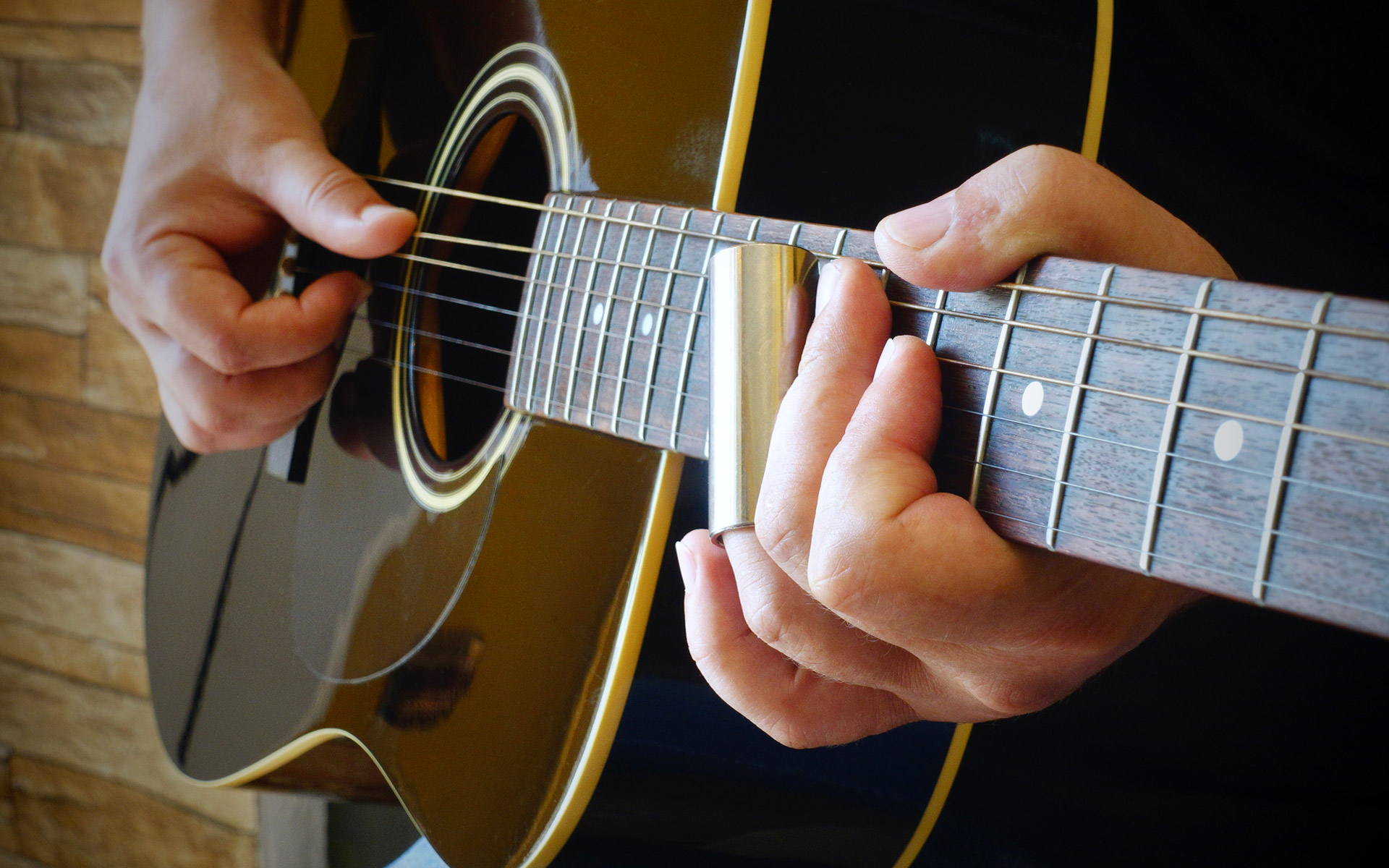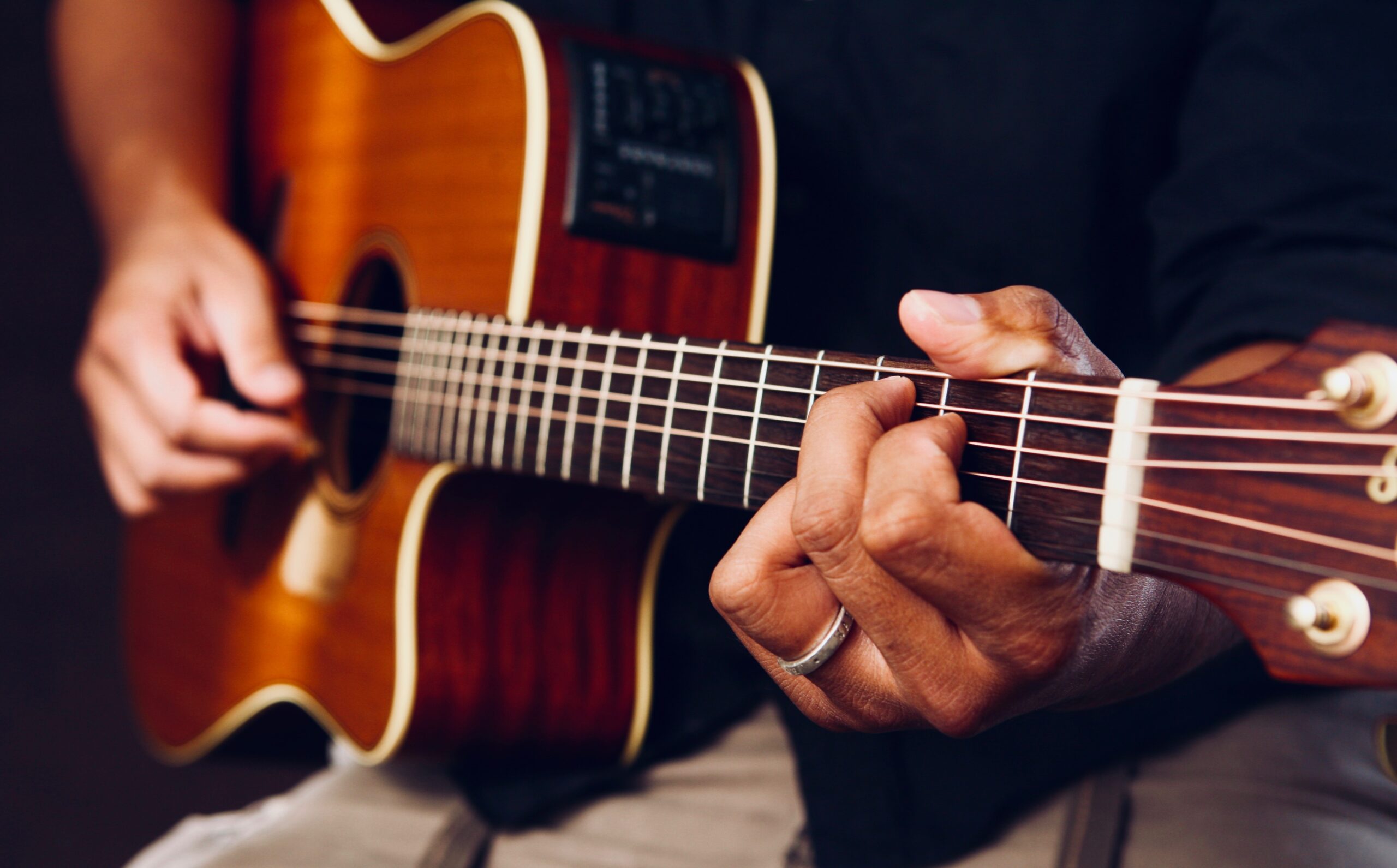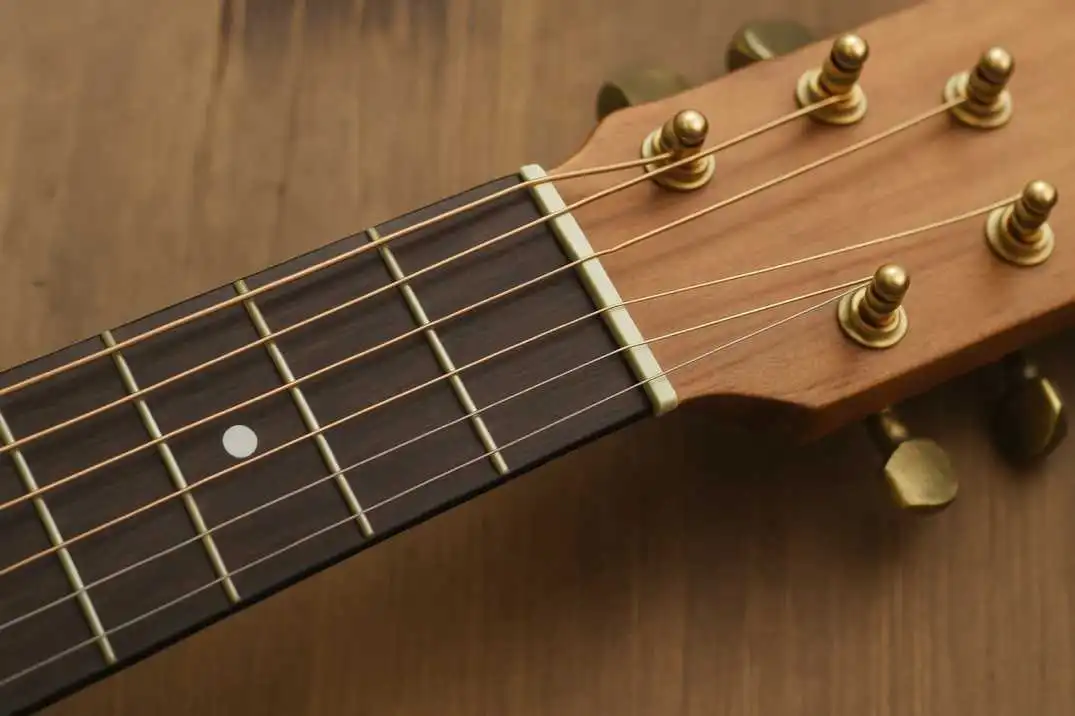1. Learn Basic Chords
Start with the fundamental chords – E, A, and B – to get a grip on the blues foundation. Practice switching between them smoothly.
2. 12-Bar Blues Progression
Understand the 12-bar blues pattern (I-IV-V) that's the cornerstone of blues music. Experiment with different rhythms within this structure.
3. Master the Blues Scale
The pentatonic scale is your go-to blues scale. Begin with the minor pentatonic, focusing on patterns that allow easy movement across the fretboard.
4. Bend Those Strings
Bending strings add that signature bluesy touch. Use your ear to guide your bends, aiming for pitch accuracy and expressive phrasing.
5. Vibrato Techniques
Vibrato adds emotion to your playing. Practice using wrist or finger vibrato to infuse your notes with feeling.
6. Listen Actively
Immerse yourself in blues music. Listen to the greats like B.B. King, Eric Clapton, and Stevie Ray Vaughan. Absorb their styles and nuances.
7. Riffs and Licks
Start with simple riffs and licks, gradually building complexity. Learn them from tutorials or by ear – they'll become your improvisational tools.
8. Call and Response
Create a dialogue with your guitar. Play a short phrase and respond to it. This mimics the conversation-like structure of blues music.
9. Practice Slowly
Speed will come with time. Begin practicing at a slower tempo, focusing on precision and accuracy.
10. Jam with Backing Tracks
Play along with blues backing tracks to simulate a band experience. This improves your timing, phrasing, and improvisational skills.
11. Feel the Rhythm
Blues is all about groove. Tap your foot or bob your head to internalize the rhythmic pulse of the music.
12. Embrace Mistakes
Don't fear mistakes – they're part of the learning process. Keep playing through them and turn them into opportunities for creative exploration.
13. Fingerpicking or Picks
Experiment with fingerpicking or using a pick. Both techniques have their place in blues playing, offering distinct tonal qualities.
14. Expression over Perfection
Focus on expressing emotions through your playing rather than striving for perfection. Blues is about feeling, not just technical prowess.
15. Record Yourself
Use your smartphone or recording device to capture your playing. Listening to yourself helps identify areas for improvement.
Exploring The World Of Blues Guitar Lessons

1. Discovering the Realm of Blues Guitar Instruction
Unveiling the artistry of blues guitar playing is an enriching journey that melds soulful melodies with intricate fretwork. Whether you're a budding musician or a seasoned player looking to delve into the blues, these guitar lessons will guide you through the essentials while maintaining a digestible level of complexity.
2. The Blues Foundation
Before embarking on your blues guitar expedition, acquaint yourself with the foundation of this genre. The blues originated in the African-American communities of the United States, with its roots stretching back to the 19th century. It's characterized by its distinct twelve-bar structure and heartfelt lyrics that often convey themes of longing, sorrow, and resilience.
3. Basic Chords and Progressions
Laying the groundwork for your blues guitar prowess involves understanding fundamental chords and progressions. Dominant seventh chords, such as the A7, D7, and E7, form the backbone of many blues tunes. These chords create a raw, edgy sound that's synonymous with the genre. Familiarize yourself with the twelve-bar blues progression, a cornerstone of blues music, as it forms the basis for countless tracks.
4. Expressive Techniques
Infuse your playing with emotion by mastering key techniques. Vibrato, the subtle variation of pitch, adds a vocal-like quality to your notes. Bending strings lets you smoothly transition between pitches, injecting drama into your phrases. Incorporate slides for seamless, fluid transitions between frets, adding an element of storytelling to your playing.
5. Pentatonic Scale Proficiency
Central to blues guitar playing is the pentatonic scale. This five-note scale comes in various positions on the fretboard and serves as the bedrock for crafting bluesy solos. Begin with the minor pentatonic scale, gradually exploring its different shapes and positions. As you gain confidence, incorporate the major pentatonic scale for a broader tonal palette.
6. Rhythm and Timing
In the world of blues, rhythm is paramount. Develop your sense of timing by playing along with backing tracks or metronomes. Experiment with syncopation, accentuating off-beats to infuse your playing with groove. A well-developed sense of rhythm elevates your ability to interact with other musicians and to create captivating arrangements.
7. Listening and Learning
Immerse yourself in the sounds of blues legends like B.B. King, Robert Johnson, and Muddy Waters. Analyze their playing styles, noting their phrasing, dynamics, and use of space. Listening attentively helps internalize the nuances of the genre and inspires your own creative interpretations.
8. Jamming and Collaboration
As you progress, seek opportunities to jam with fellow musicians. Collaborative sessions provide space for improvisation and experimentation. Playing with others enhances your adaptability and exposes you to diverse playing approaches, enriching your musical journey.
Top Easy Blues Guitar Chords For Beginners

1. E7 (E dominant 7)
This chord is played by placing your first finger on the 1st fret of the 3rd string, your second finger on the 2nd fret of the 1st string, and your third finger on the 2nd fret of the 2nd string.
2. A7 (A dominant 7)
Place your first finger on the 1st fret of the 2nd string and your second finger on the 2nd fret of the 4th string.
3. D7 (D dominant 7)
To play this chord, place your first finger on the 2nd fret of the 3rd string and your second finger on the 2nd fret of the 1st string. Let the other strings ring open.
4. G7 (G dominant 7)
Put your first finger on the 1st fret of the 1st string and your second finger on the 2nd fret of the 3rd string. Allow the other strings to sound open.
5. C7 (C dominant 7)
This chord is formed by putting your first finger on the 1st fret of the 2nd string and your second finger on the 2nd fret of the 4th string.
6. B7 (B dominant 7)
Place your first finger on the 1st fret of the 4th string, your second finger on the 2nd fret of the 2nd string, and your Let the other strings ring open.
7. E9 (E dominant 9)
To play this chord, use your first finger to bar the 5th fret across all the strings. Then, place your second finger on the 6th fret of the 3rd.
8. A9 (A dominant 9)
Bar the 5th fret with your first finger across all strings, and then place your second finger on the 6th fret of the 2nd string.
9. D9 (D dominant 9)
This chord is formed by barring the 5th fret with your first finger and placing your second finger on the 6th.
10. G9 (G dominant 9)
Bar the 5th fret using your first finger, and then place your second finger on the 6th fret of the 1st string, your third finger on the 7th fret of the 3rd string, and your fourth finger on the 7th fret of the 5th string.
The Impact Of Easy Blues Guitar Tabs

Easy blues guitar tabs have left an indelible mark on aspiring guitarists and the music industry alike. These simplified musical notations provide an accessible entry point for beginners to delve into the enchanting realm of blues music. With their straightforward approach and intuitive format, these tabs have had a significant impact on both learning and appreciating the blues genre. Blues music, known for its emotive melodies and expressive storytelling, has a rich history rooted in African American culture. It has been a cornerstone of various music genres and has inspired countless musicians. Easy blue guitar tabs have played a crucial role in introducing this genre to novice guitar players. By presenting the fundamental elements of blues music in a manageable form, these tabs break down the initial barriers that often discourage beginners. The impact of easy blues guitar tabs is noteworthy for several reasons. Firstly, they offer a simplified version of complex musical arrangements. Traditional sheet music can be intimidating for newcomers due to its intricate notation system. Tabs, on the other hand, use numbers and symbols to indicate where fingers should be placed on the guitar's fretboard. This visual representation makes it easier for beginners to grasp the basic structure of blues songs. Moreover, easy blue guitar tabs foster a sense of accomplishment and motivation among learners. As beginners are able to play recognizable blues tunes relatively quickly, they gain confidence in their musical journey. This positive reinforcement encourages them to explore more challenging aspects of guitar playing and music theory. The tabs serve as a gateway to developing crucial skills that extend beyond merely replicating songs. The accessibility of easy blues guitar tabs also extends to those who might not have the resources for formal music education. Not everyone can afford private lessons or music classes, and tabs offer a cost-effective alternative. With the plethora of online resources, aspiring guitarists can access a wide array of tabs for free, democratizing music education and enabling individuals from various backgrounds to engage with blues music.
Read Also: Exploring The Best Bass Strings For Beginners
Learn The Basics Of Accoustic Guitar Playing

1. Guitar Anatomy
The acoustic guitar comprises several essential parts. The body, usually made of wood, produces the sound. The neck extends from the body and holds the frets. hosts the tuning pegs, which adjust the string tension for tuning.
2. Tuning
Standard tuning, from the thickest to thinnest string, is E-A-D-G-B-E.
3. Basic Chords
Chords are the foundation of guitar playing. Start with open chords like C, G, D, A, and E. Place your fingers on specific frets while strumming the strings to produce different chord sounds.
4. Strumming
Strumming involves sweeping your fingers or a pick across the strings. Practice simple downstrokes and upstrokes to create rhythm. Combine different strumming patterns with chords for variation.
5. . Basic Songs
Play simple songs using the chords you've learned.
8. Reading Tabs
Tablature (tabs) is a visual representation of where to place your fingers on the frets. The lines represent strings, and the numbers indicate which fret to press.
9. Practicing Scales
Scales improve your finger dexterity and understanding of the fretboard. Start with the common C Major scale, then explore other scales like G Major and D Major.
10. Barre Chords
Barre chords involve pressing down multiple strings with one finger across the entire fret. They open up new chord possibilities but can be challenging for beginners.
By Anushikha bhatnagar




